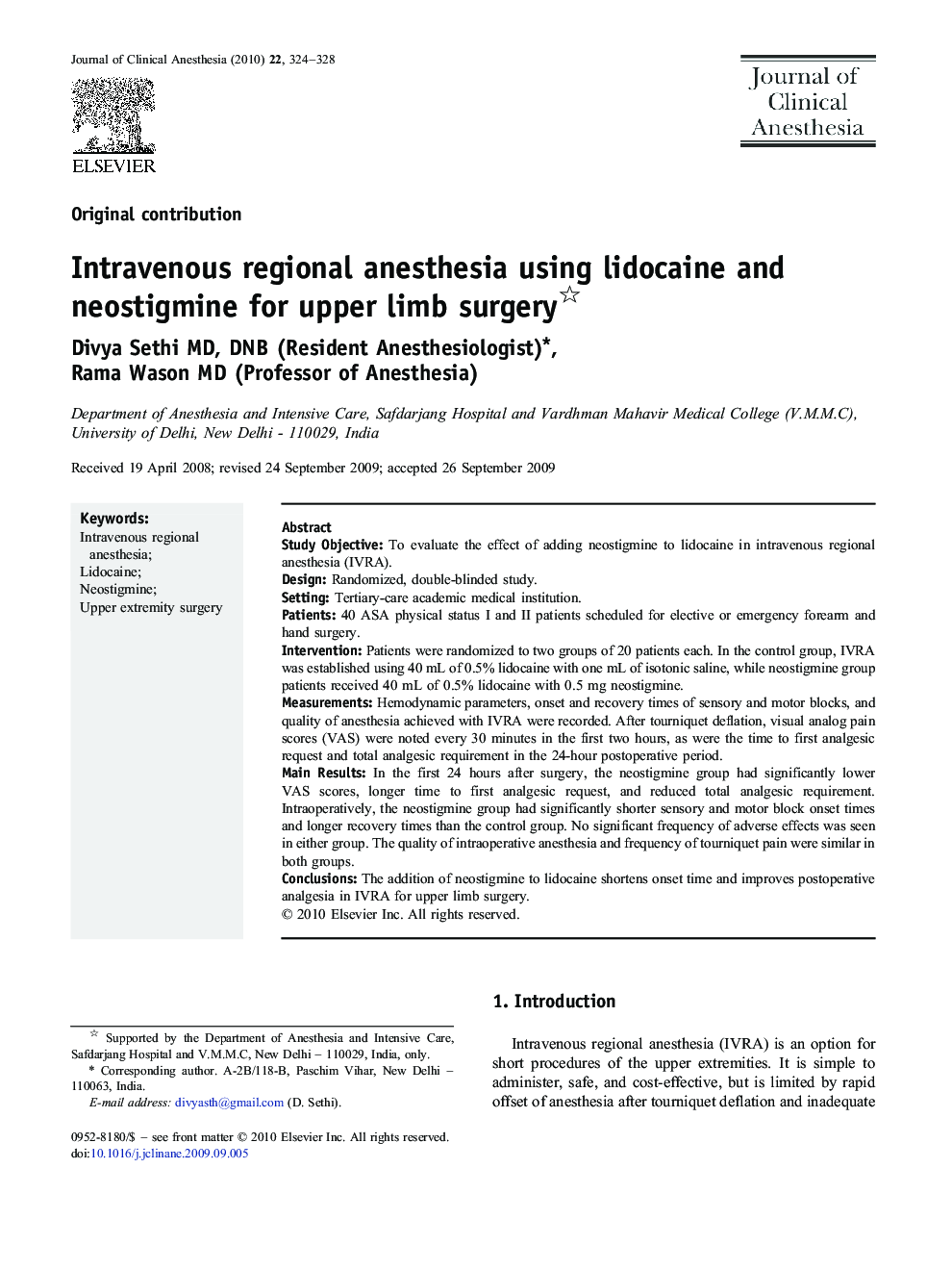| Article ID | Journal | Published Year | Pages | File Type |
|---|---|---|---|---|
| 2763066 | Journal of Clinical Anesthesia | 2010 | 5 Pages |
Study ObjectiveTo evaluate the effect of adding neostigmine to lidocaine in intravenous regional anesthesia (IVRA).DesignRandomized, double-blinded study.SettingTertiary-care academic medical institution.Patients40 ASA physical status I and II patients scheduled for elective or emergency forearm and hand surgery.InterventionPatients were randomized to two groups of 20 patients each. In the control group, IVRA was established using 40 mL of 0.5% lidocaine with one mL of isotonic saline, while neostigmine group patients received 40 mL of 0.5% lidocaine with 0.5 mg neostigmine.MeasurementsHemodynamic parameters, onset and recovery times of sensory and motor blocks, and quality of anesthesia achieved with IVRA were recorded. After tourniquet deflation, visual analog pain scores (VAS) were noted every 30 minutes in the first two hours, as were the time to first analgesic request and total analgesic requirement in the 24-hour postoperative period.Main ResultsIn the first 24 hours after surgery, the neostigmine group had significantly lower VAS scores, longer time to first analgesic request, and reduced total analgesic requirement. Intraoperatively, the neostigmine group had significantly shorter sensory and motor block onset times and longer recovery times than the control group. No significant frequency of adverse effects was seen in either group. The quality of intraoperative anesthesia and frequency of tourniquet pain were similar in both groups.ConclusionsThe addition of neostigmine to lidocaine shortens onset time and improves postoperative analgesia in IVRA for upper limb surgery.
